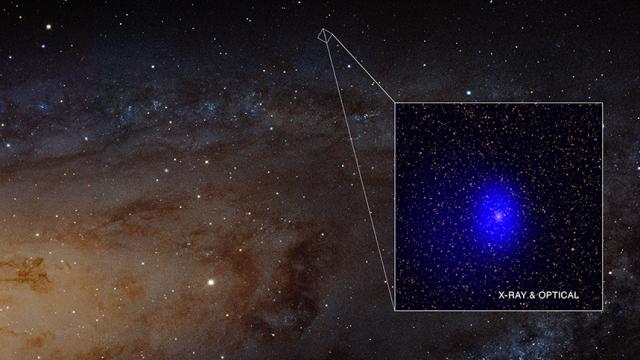Oops! Andromeda, our closest galactic neighbour, sits a measly 2.5 million light years away from Earth. Like the Milky Way, it’s a spiral galaxy packed with stars. Some of those stars orbit one another. That’s all good – but scientists have come to the realisation that a particular light source, one assumed to be binary star system in Andromeda, may actually be something far stranger. Like a pair of orbiting supermassive black holes a thousand times further away.
Image: X-ray: NASA/CXC/Univ. of Washington/T.Dorn-Wallenstein et al.; Optical: NASA/ESA/J. Dalcanton, et al. & R. Gendler
“J0045+41,” the strange source, “is an exciting and unique object,” the scientists from the University of Washington write in their paper, accepted by the Astrophysical Journal.
A team of Spanish scientists first identified the source, J0045+41, back in 2006. More specifically, they were looking for binary star systems that could be used to better determine astronomical distances. Others catalogued it as a potential cluster of stars.
A team of researchers from the University of Washington combined data on the object’s light using the Gemini Multi-Object Spectrograph and NASA’s Chandra X-Ray Telescope to experience their “that’s no moon” moment. The data instead implied that J0045+41 was an active galactic nuclei, an incredibly bright galactic centre with a supermassive black hole at the core, 2.5 billion light years away.
The scientists did detect some evidence of this light source dimming and brightening regularly. But this regular flashing looked almost exactly how the laws of physics would predict supermassive black holes orbiting one another would look.
Also, they did their analysis in the Python programming language. I don’t know why I feel like pointing that out, but I felt like pointing that out today. Physics requires computers.
Ultimately, the researchers hope to take better data using the upcoming Zwicky Transient Facility survey, a next-generation camera that’s just started detecting weird things in space. And if these were really supermassive black holes orbiting one another, perhaps one day researchers will be able to detect their gravitational waves.
When you’re trying to decode the origin of distant lights, mistakes can happen. But sometimes they can result in really wild discoveries.
